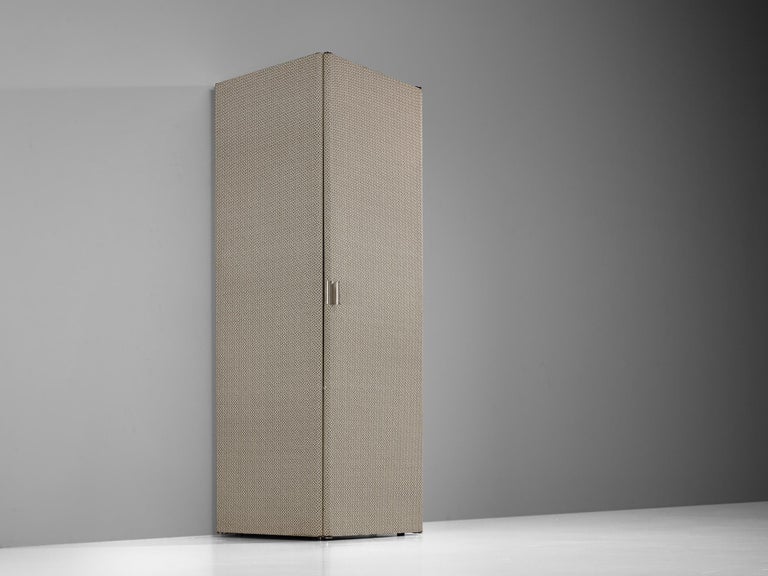
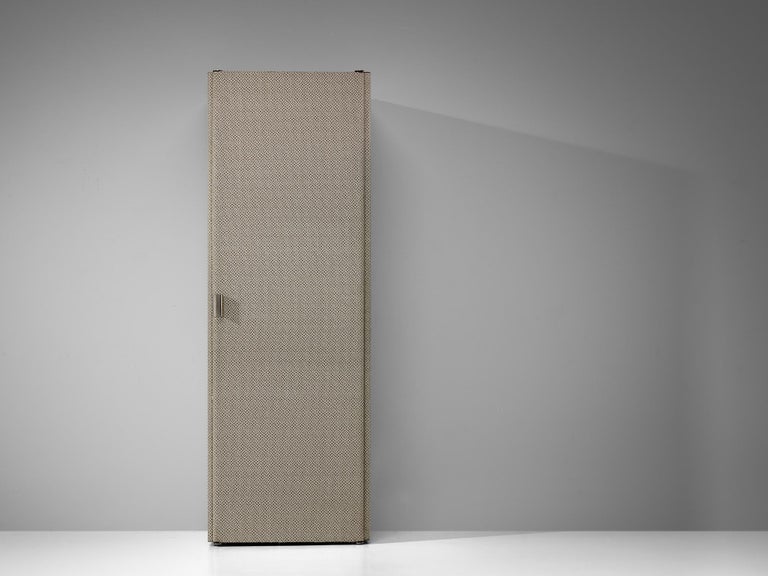
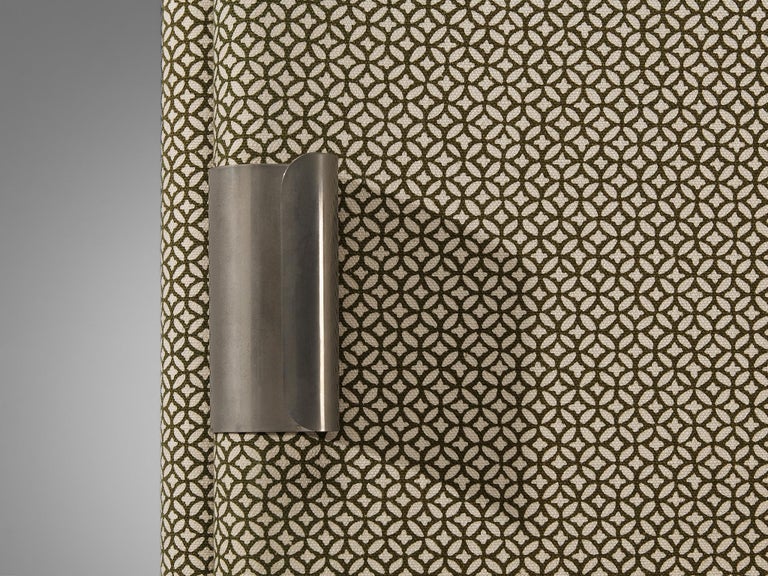
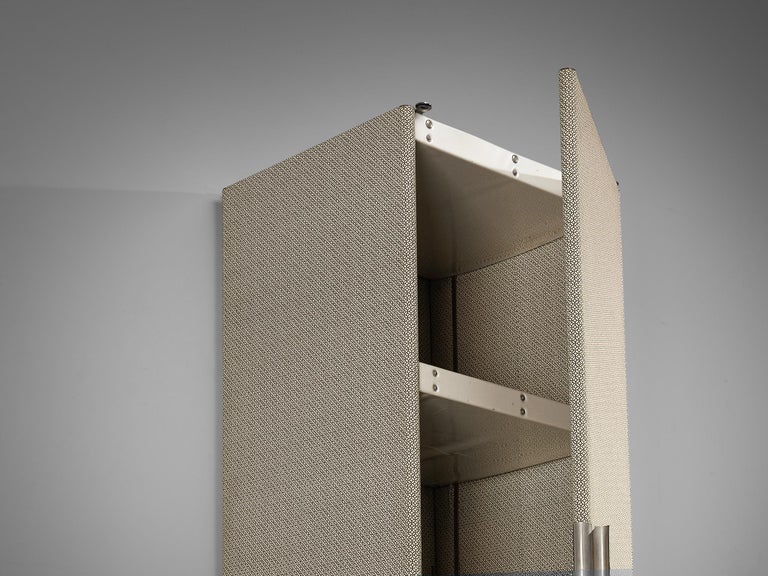
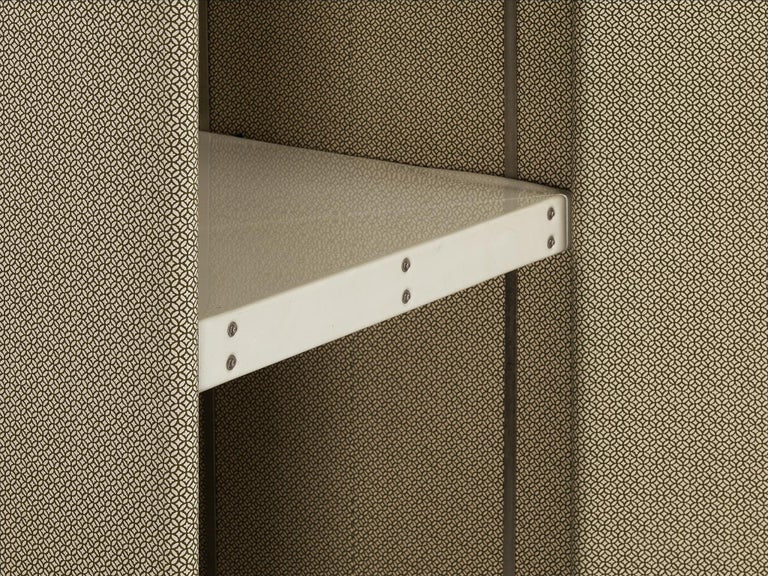
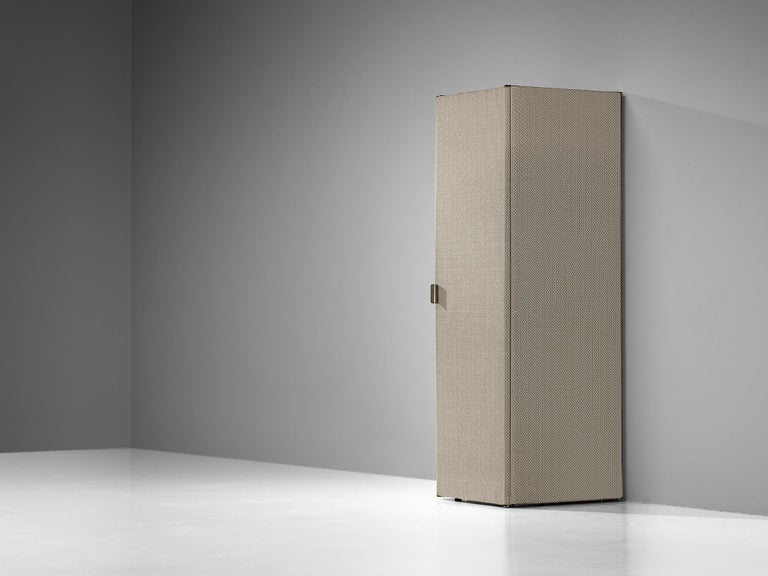
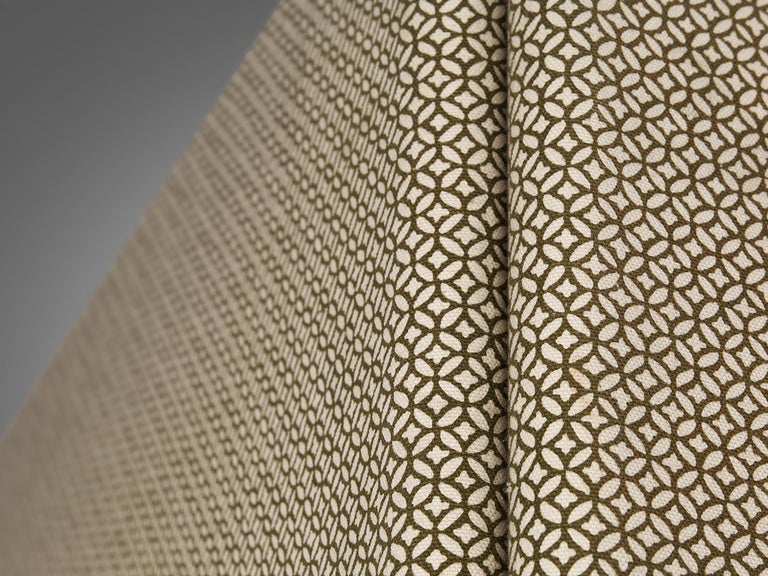

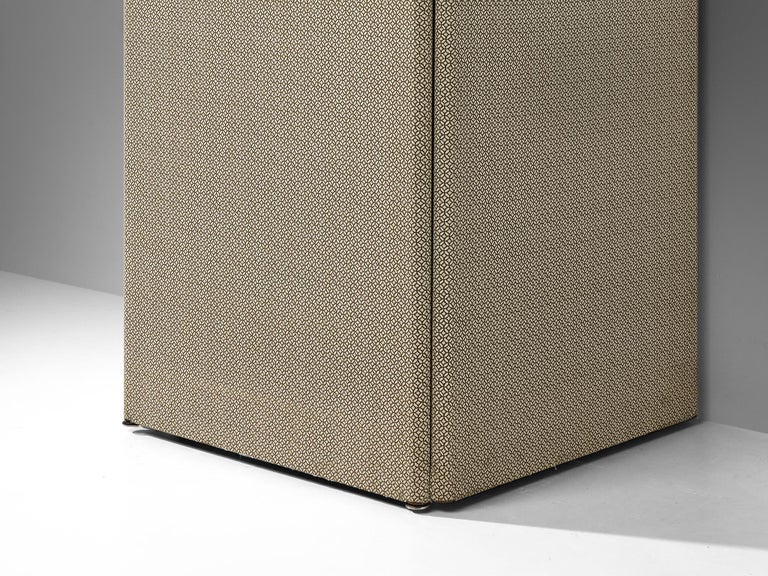
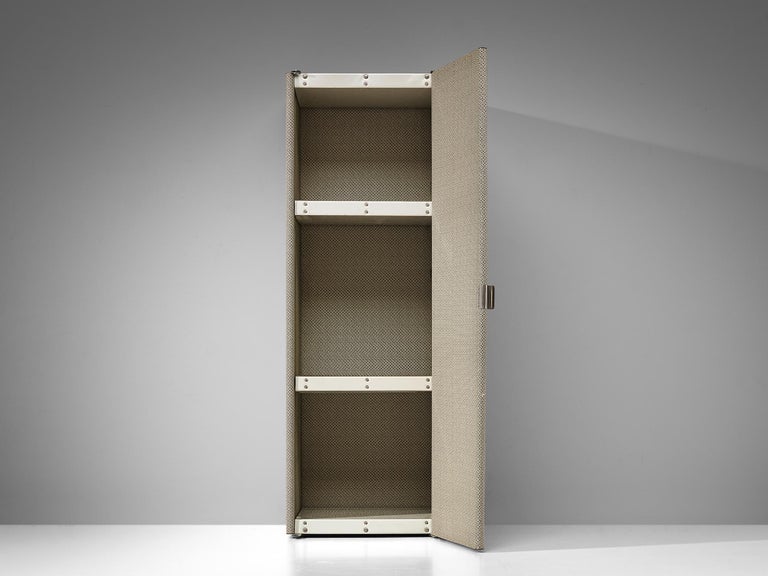
Otto Zapf for ZapfDesign 'Softline' Cabinet in Grey
Otto Zapf for Zapfdesign 'Softline' cabinet, plastic, fabric, Germany, 1969
A grey-colored detachable 'Softline' cabinet with shelves designed by the German designer Otto Zapf. Press studs form the connections and allow a maximum in flexibility. Patterned fabric and plastic sheets coated with lacquer foil in white form an interesting composition. With the choice of materials and the smooth lines Otto Zapf hits the zeitgeist of the late 1960s/early 1970s. ‘Softline’ resembles the characteristics of Pop Art and Space Age and follows the idea of modular living and working areas. Zapf uses an experimental material and combines it with an uncommon way of construction, marking himself as an avant-garde designer. The ‘Softline’ series is supposed to be installed on location. The modular elements can be easily detached and take minimum transport space.
The avant-garde ‘Softline’ series by Otto Zapf was designed in 1969 and gained international attention when presented for the first time. The functional clothing in bright colors and smart closing mechanisms with press studs and zippers, gave Zapf the idea to create a series that reinterpreted his experience during a ski trip. Following the three principles of modularity, functionality and flexibility Zapf designed a revolutionary furnishing line consisting of a wall unit, shelf, room divider, table, lounge chair and a bed; produced by ZapfDesign. The soft borders of the furnishings derive from Zapf’s conclusion “Because I have never discovered sharp edges on any person, I no longer want to believe that the objects we surround ourselves with must have sharp edges.” The ‘Softline’ series is supposed to be installed on location. The modular elements can be easily detached and take minimum transport space. Zippers and press studs form the connections and allow a maximum in flexibility. Frames and plastic sheets coated with lacquer foil in red, white, yellow, green, black, or blue allow any kind of color composition. With the choice of material in a bright color palette and the smooth lines Otto Zapf hit the zeitgeist of the late 1960s/early 1970s. ‘Softline’ resembles the characteristics of Pop Art and Space Age and follows the idea of modular living and working areas. Zapf uses an experimental material and combines it with an uncommon way of construction, marking himself as an avant-garde designer.
Otto Zapf (1931-2018) was born into a family of carpenters and cabinetmakers. His family had a carpentry business in Czechia in many generations. In 1945, Zapf’s family was forced to flee their home and business. They settle in Eschborn as expellees and in the mid 1950s Zapf’s father decides to open a workshop again. Zapf studied mathematics and physics at the University of Frankfurt. At the age of 25, Zapf joins a design collective together with graphic designer Günther Kieser and architect Rolf Schmidt, who encouraged Zapf to create his own designs. One year later (1957), Zapf began a collaboration with Dieter Rams who was employed at Braun at the time. From this time comes also the ‘RZ- design’ standing for Rams and Zapf. The ‘RZ’ was highlighting flexibility and individuality. In 1959, Zapf founded ‘Vitsoe + Zapf’ and marries his wife in the same year. Shortly afterwards, in 1967, Zapf leaves ‘Vitsoe + Zapf’ to open his own studio called ‘ZapfDesign’, a decision that helped Zapf to gain international recognition. Zapf, who died in 2018, was honored with a retrospective in 2020 in Eschborn, Germany.
Please note that the fabric contains wear. For further details, we encourage you to reach out to our team of design specialists.
VAT within the EU: When buying or delivering an item within the EU, VAT usually applies and will be added.
Choose options










Product Details